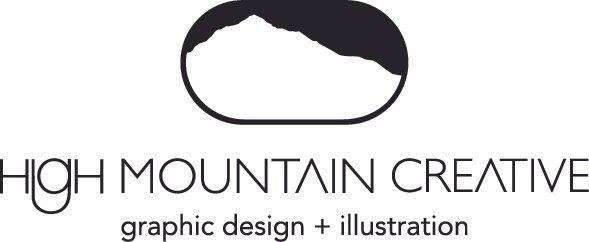How I Created A Purpose-Driven Career In The Outdoor Industry
When I left my full time job in ski resort marketing to run High Mountain Creative in 2014, my intention was to stay focused on working with outdoor brands. I was at that stage in my freelancing career where I was trying out a lot of different types of client work to see what clicked. During this process of growing my business in the outdoor industry, I found myself getting caught up in the irony of how creating goods and services for better outdoor experiences often includes negative environmental impacts as a byproduct. Corporate ski resorts with operations that largely impact natural resources, gear brands producing goods with unsustainable materials and big carbon footprints, even using marketing to promote traditionally low-impact activities like camping and hiking seemed to cause inner-conflict for me because of the potential for overuse, littering and disturbance of wildlife and ecosystems. While I never claim to be perfect when it comes to this stuff (yes, I still ride the ski lift and drive my camper to the forest on the weekends) I knew I wanted to do work that supports the outdoors as something to enjoy and preserve, not monetize and use up.
At first, I felt hopeless that, as a graphic designer, my profession was useless towards conservation or sustainability efforts. I was convinced that if I wasn’t inventing a revolutionary recyclable Gore-Tex alternative or studying the decline of the Piping Plover, I wasn’t dedicating my career to anything important in terms of the big picture. I started considering going back to school to study environmental engineering or wildlife biology, but I wasn’t ready to commit to a full career pivot. It took working on a design project with my first nonprofit client, American Rivers, to realize that I already had the skills I needed to do good. By helping a nonprofit produce well-designed and impactful infographics, annual reports and campaign assets, I’m helping them tell their story and get their cause in front of supporters in a relatable, approachable way.
Eventually, my client list started to include a lot more nonprofits that focused on preserving nature and the outdoors like The Nature Conservancy, National Forest Foundation and NOAA (The National Oceanic and Atmospheric Administration). It turned out that not having a background in science or engineering was actually a valuable skill set because my design brain helps bridge the gap between the general population and the often-hard-to digest science and research behind important environmental issues. I started to feel excited and empowered that I could use my design skills and passion for the outdoors to help those on the front lines of protecting the planet.
Each year, as my appreciation and connection to the outdoors deepens, I feel grateful for the opportunities I have to be a part of preserving the places and things I love. While my outdoor career didn’t exactly turn out the way 16-year-old me pictured – designing snowboards for Burton and rubbing shoulders with X Games athletes – I still consider myself to have a successful career in the outdoors – with the added bonus of doing less harm and more good while I’m at it.
Did your concern about the environment or sustainability change the course of your career? I’d love to hear about it, drop a comment below!
I’m Margo! A graphic designer who works with conservation-minded nonprofits and brands on projects like logos & branding, annual reports, maps, and infographics. I work with my clients to create beautiful and meaningful design that amplifies the marketing efforts it takes to ignite action and change. Visit my portfolio to see some of the projects I’ve collaborated on with nonprofits to protect the environment.

